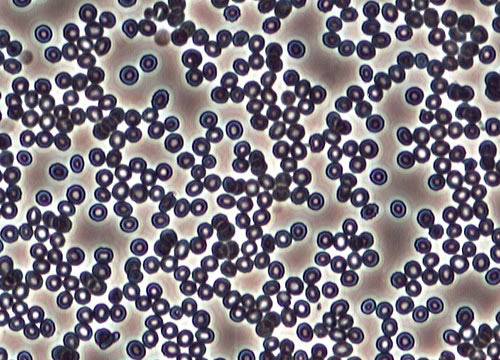Human Erythrocytes
The compositional difference between blood types lies in the specific kinds of antigens found on the surface of the red blood cells. Antigens are protein molecules that provide the biological mark of an individual's blood and tissue type. When different types of blood are mixed within the body, the reaction can be fatal as red blood cells burst and the kidneys fail. Today, there are 27 known human blood groups. Understanding blood compatibility issues has had a revolutionary effect on the field of medicine.
 Negative
Negative
 Positive
Positive
Positive
Red blood cells were first described in 1658, but it was almost another 250 years before the first four human blood groups, A, B, AB and O, were identified. The compositional difference between blood types lies in the specific kinds of antigens found on the surface of the red blood cells. Antigens are protein molecules that provide the biological mark of an individual's blood and tissue type. When different types of blood are mixed within the body, the reaction can be fatal as red blood cells burst and the kidneys fail. Today, there are 27 known human blood groups. Understanding blood compatibility issues has had a revolutionary effect on the field of medicine.
Negative
As far back as the mid-Seventeenth Century, physicians attempted blood transfusions, albeit only in extreme circumstances. The earliest attempted transfusions employed animals as the donors. Later, in the Nineteenth Century, blood was usually transferred directly from a healthy individual to a patient through a rubber tube with hypodermic needles at each end. Physicians were perplexed by the seemingly random results. Some transplant recipients survived while many others did not. The discovery of blood types in the early Twentieth Century is what finally led doctors to understand how transfusions could consistently save lives.













